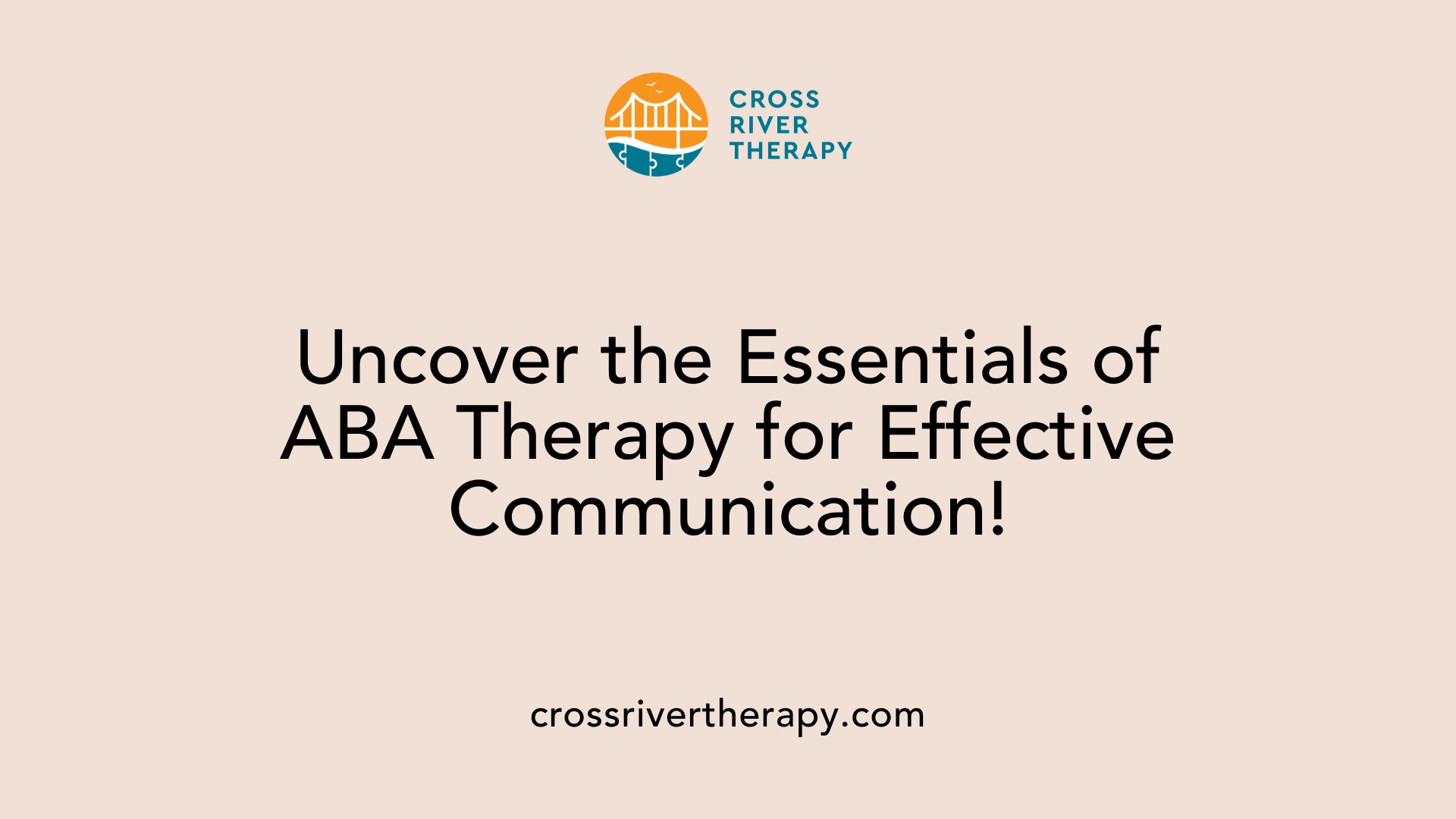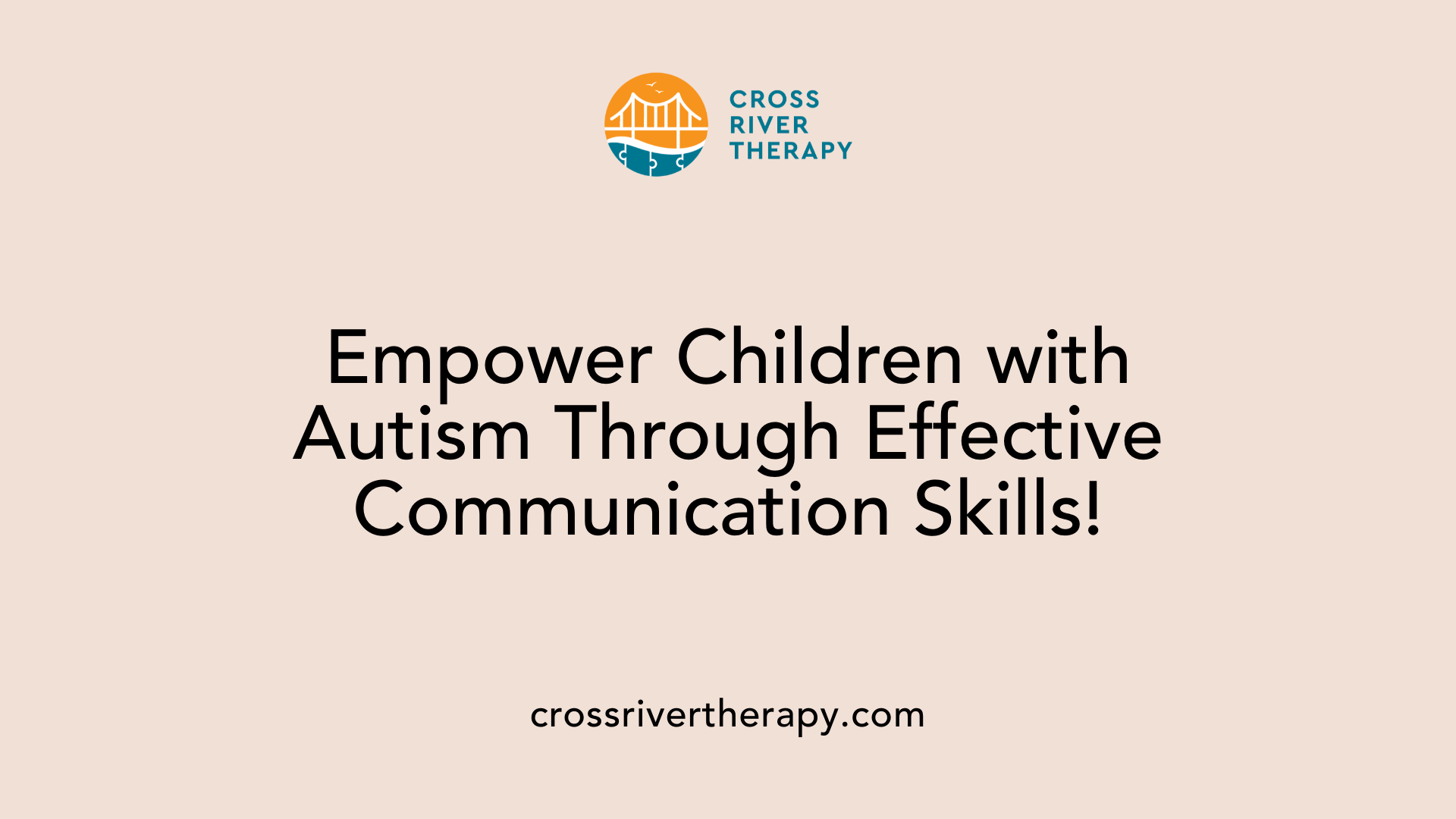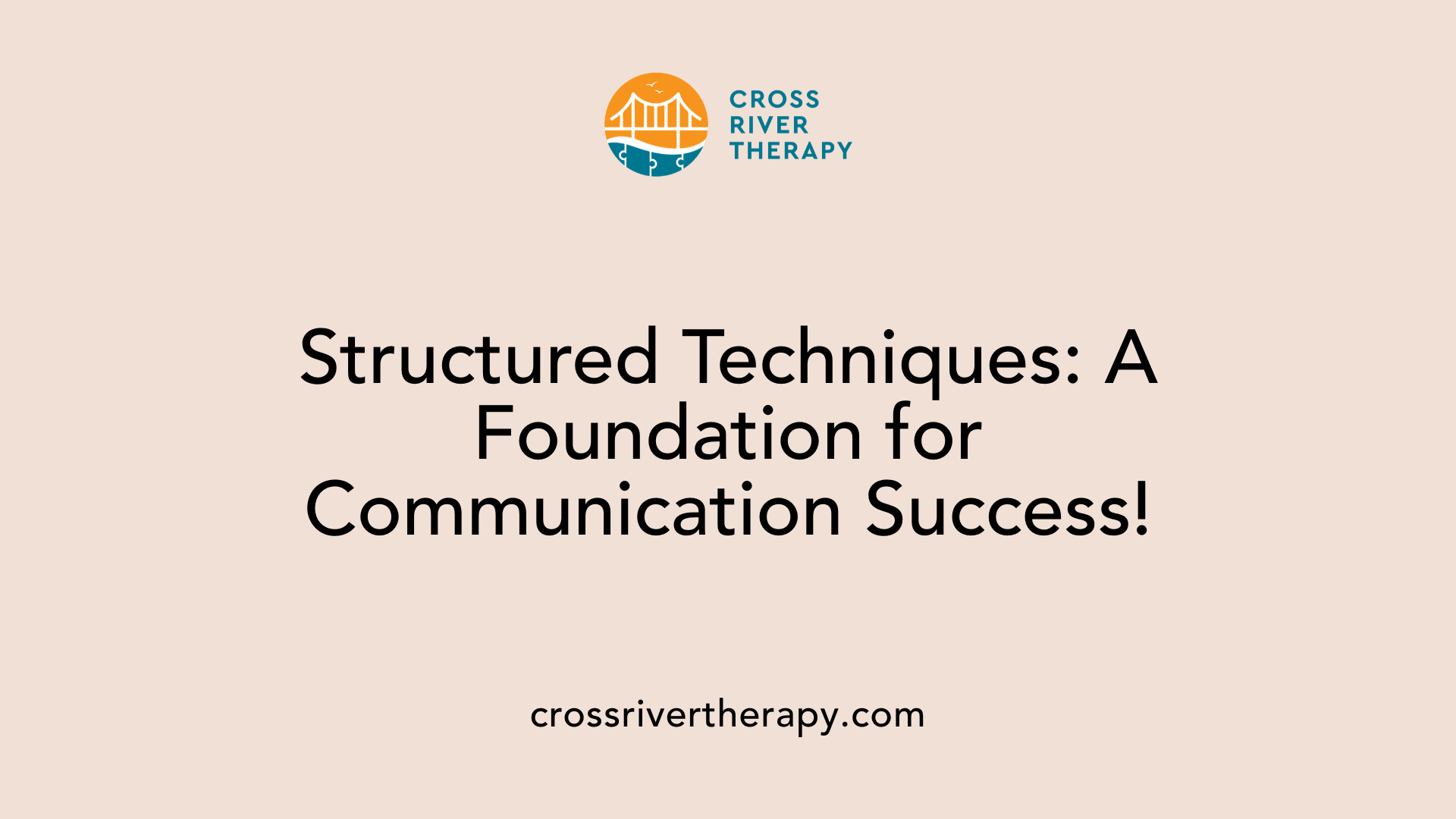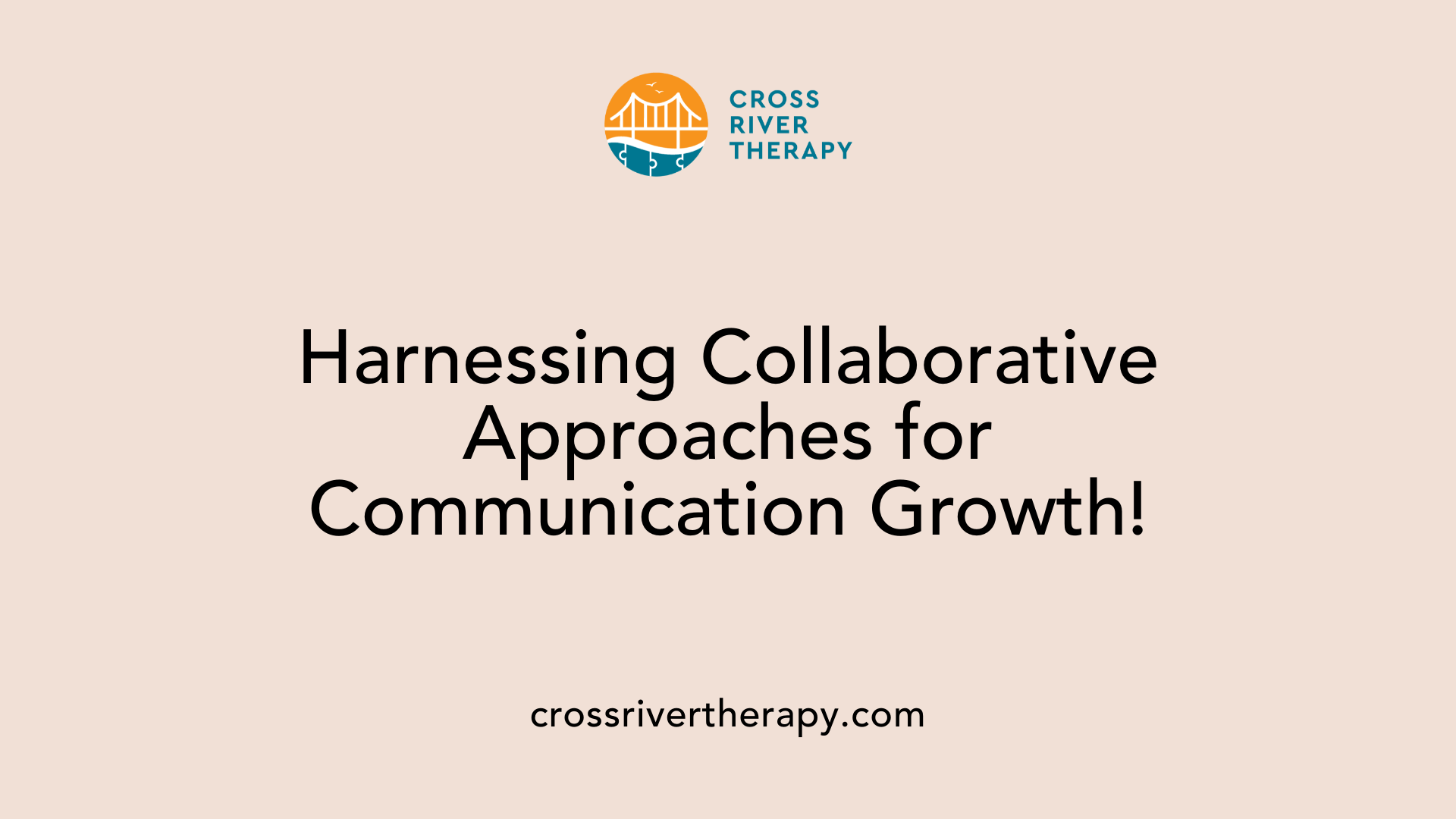How Cross River Therapy Helps Children Improve Communication Skills
Cross River Therapy Transforms Communication in Children
Understanding Cross River Therapy's Role in Child Communication
In today's world, effective communication is crucial for developing children, particularly those on the autism spectrum, who often encounter unique challenges in this area. Cross River Therapy stands out as a promising approach that significantly enhances communication skills by leveraging evidence-based methods. This article explores how Cross River Therapy addresses these needs, focusing on its methodologies and benefits in developing speech and communication capabilities.
Foundations of Applied Behavior Analysis (ABA) in Cross River Therapy

Introduction to ABA
Applied Behavior Analysis (ABA) therapy is a structured intervention widely recognized for its effectiveness in enhancing communication skills in children, particularly those on the autism spectrum. It operates on the principle of modifying behavior through reinforcement strategies, aiming to teach individuals how to express themselves clearly and engage socially.
How ABA Supports Communication
ABA therapy breaks down complex communication skills into smaller, manageable tasks. This structured approach allows children to identify specific challenges they face and work on them with targeted support. For instance, strategies such as echoic training and mand training help children practice speech by focusing on sounds and requests.
In addition, ABA incorporates various techniques to support both verbal and non-verbal communication. Children learn to use gestures, facial expressions, and body language effectively, which are all crucial for conveying emotions and interacting with others.
Positive Reinforcement Techniques
A cornerstone of ABA therapy is positive reinforcement, where desired communication behaviors are rewarded. This can include verbal praise, reward tokens, or engagement in preferred activities. Such incentives not only motivate children to practice their skills but also build their confidence in social interactions.
Moreover, ABA therapy often integrates Augmentative and Alternative Communication (AAC) methods for non-verbal children, employing tools like the Picture Exchange Communication System (PECS) to enhance expressive abilities. By tailoring interventions to each child’s unique communication challenges, ABA therapy proves to be a vital resource for improving speech and language outcomes in children with autism.
Importance of Teaching Communication Skills to Children with Autism

Why is it important to teach communication skills to children with autism?
Teaching communication skills to children with autism is essential because these skills significantly impact their ability to learn and function in everyday life.
Every child with Autism Spectrum Disorder (ASD) experiences communication difficulties to varying degrees, which can range from being nonverbal to having advanced language skills with challenges in practical use. By developing communication skills, students gain a fundamental right to express their needs, feelings, and desires, promoting their personal empowerment and independence.
Understanding and teaching the various functions of communication—such as requesting help, expressing feelings, or engaging socially—can help meet the diverse needs of students with ASD.
Impact on learning and daily life
Utilizing a range of communication methods, including verbal and non-verbal forms, as well as assistive technologies, enables individualized strategies for effective interaction.
Positive reinforcement, role-playing, and personalized therapy plans are crucial in enhancing communication abilities. For example, structured techniques teach children to interpret and respond to social cues, improving their interactions and overall learning experiences.
By addressing the communication barriers children with autism face, effective skills can lead to greater independence, increased self-esteem, and better relationships with peers and adults. Consequently, the impact of these skills extends beyond academia, enriching their everyday lives.
Structured Approaches to Enhancing Communication in Cross River Therapy

Breaking Down Communication Tasks
ABA therapy excels in improving communication skills by breaking down complex tasks into manageable steps. This method makes it easier for children, especially those with autism or developmental disorders, to learn how to express themselves more clearly. Each skill is dissected into smaller, achievable goals that foster gradual learning. For instance, a child might start by learning simple phrases before progressing to more complex sentences as their confidence grows.
Importance of Structured Techniques
Structured techniques are crucial in the ABA approach. They encompass strategies like modeling, prompting, and fading, which guide children through various communication scenarios. Through structured practice, children engage in role-playing or real-life situations that teach them to interpret social cues and respond appropriately. Positive reinforcement, such as verbal praise or preferred activities, encourages children to practice these skills, ultimately enhancing their social interaction and communication abilities.
| Technique | Description | Goals Achieved |
|---|---|---|
| Modeling | Demonstrating desired communication behaviors | Initiating conversations, understanding cues |
| Prompting & Fading | Providing initial cues that are gradually reduced | Promoting independent communication |
| Role-Playing | Practicing social interactions in controlled settings | Learning to interpret social cues |
| Positive Reinforcement | Rewarding desired behaviors to encourage practice | Boosting confidence in communication |
| Natural Environment Teaching | Using skills during everyday activities | Promoting generalization of communication skills |
Overall, these structured strategies not only improve verbal and non-verbal communication but also foster a child's ability to navigate social interactions effectively.
Positive Reinforcement and Its Role in Communication Development
Role of positive reinforcement in ABA
Positive reinforcement is a cornerstone of Applied Behavior Analysis (ABA) therapy, especially in developing communication skills for children with autism and other developmental disorders. This method involves rewarding desirable behaviors to encourage their recurrence. When a child successfully uses a word to express a need or initiates a conversation, immediate reinforcement, such as verbal praise or tokens, motivates them to keep practicing and builds their self-esteem.
Types of reinforcement used
ABA therapy employs various types of positive reinforcements, including:
| Type of Reinforcement | Description | Examples |
|---|---|---|
| Verbal Praise | Simple affirmations and encouragement | "Well done!", "Great job communicating!" |
| Tangible Rewards | Physical items that the child enjoys | Stickers, small toys, or treats |
| Preferred Activities | Engaging in enjoyable tasks or games | Extra playtime or favorite games |
By using these methods, therapists can effectively promote communication development, making learning a positive and rewarding experience for children.
Social Communication Skills: From Role-playing to Real-world Application
Role-playing Techniques
Role-playing plays a significant role in enhancing social communication skills in children undergoing ABA therapy. Through structured activities, therapists guide children in practicing conversations and social interactions. These scenarios allow children to rehearse responses to various social situations, boosting their confidence. For example, they might role-play how to greet a peer, ask for help, or initiate play.
Interpreting Social Cues
Understanding social cues is crucial for effective communication, especially for children with autism. ABA therapy focuses on teaching children to recognize and interpret non-verbal signals, such as making eye contact, using appropriate facial expressions, and responding correctly in conversations. By engaging in realistic scenarios, children learn to navigate social dynamics. For example, they may practice understanding when it’s their turn to speak in a conversation or the appropriate way to respond to a friend’s emotional state.
These strategies in ABA therapy not only foster verbal skills but also enhance overall social awareness, helping children to engage more naturally in their everyday interactions.
Verbal and Non-verbal Skills: Comprehensive Communication Development
Echoic Training and Phonetics
ABA therapy emphasizes the importance of language development through methods such as echoic training. This technique focuses on encouraging children to repeat sounds and words correctly, greatly enhancing their phonetic abilities. By breaking language down into manageable components, children gain confidence in their speaking capabilities.
For instance, when a child echoes a word correctly, they may receive verbal praise or tokens as positive reinforcement. Such encouragement not only motivates the child but also establishes a clear link between their efforts and successful communication.
Non-verbal Communication Techniques
In addition to verbal skills, ABA therapy significantly addresses non-verbal communication. Children learn to utilize gestures, facial expressions, and body language to express emotions and needs effectively. Understanding how to convey thoughts without words is crucial for fostering meaningful social interactions.
ABA therapists often incorporate role-playing and real-life scenarios to teach non-verbal cues. For example, making eye contact when speaking or utilizing appropriate gestures can help children navigate conversations more naturally. This balanced approach enhances overall communicative competence, ensuring children are equipped with both verbal and non-verbal tools for effective interactions.
Functional Communication Strategies in Daily Life
Functional Communication in ABA
Functional communication strategies are integral to ABA therapy, focusing on equipping children with the skills necessary to navigate daily interactions. ABA aims to teach children to communicate effectively by addressing specific needs—like asking for help or expressing emotions. This is achieved through individualized therapy plans that cater to each child’s unique challenges.
Teaching Children to Express Needs
ABA therapy employs various techniques, including verbal and non-verbal communication strategies, to help children express their needs clearly. Some effective methods include:
- Mand Training: Teaching children to make requests using words or symbols.
- Echoic Training: Encouraging imitation of sounds and words to develop verbal skills.
- Use of AAC Systems: Implementing tools like Picture Exchange Communication System (PECS) for non-verbal children.
Positive reinforcement, such as praise or tokens, motivates children to engage in communication. For instance, when a child successfully asks for a toy, they receive encouragement, strengthening their desire to communicate in future interactions. These strategies collectively foster greater independence and confidence in children, enriching their daily lives with improved communication skills.
Tailoring Individualized Plans for Effective Therapy
Importance of personalized plans
Individualized plans are crucial in ABA therapy, particularly for children with autism or developmental disorders. These tailored approaches allow therapists to assess and address each child’s specific communication abilities and challenges. By breaking down complex communication skills into manageable steps, these personalized plans create a structured learning environment that enhances understanding and retention.
Furthermore, therapists utilize targeted strategies such as echoic and mand training, focusing on the unique needs of each child. This individualized attention not only increases engagement but also provides a clearer pathway for skill acquisition, improving outcomes significantly.
Maximizing treatment effectiveness
Maximizing treatment effectiveness hinges on the continuous collaboration between ABA therapists and other specialists, such as speech therapists. This multidisciplinary approach ensures consistency in the goals set for the child. Such cohesion allows for a comprehensive strategy that reinforces communication skills across different contexts.
The integration of Augmentative and Alternative Communication (AAC) methods also enhances the individualized plan. For children with minimal verbal skills, systems like PECS or speech-generating devices can become valuable tools for fostering communication.
Ultimately, a tailored plan enables therapists to monitor progress and adapt strategies as needed, ensuring that children are not only learning to communicate but also gaining confidence in using their skills effectively.
The Critical Timing: Importance of Early Intervention
Early intervention benefits
Research decisively shows that early intervention can significantly affect children with autism, especially regarding communication skills. Children who start Applied Behavior Analysis (ABA) therapy at a young age tend to exhibit greater improvements in verbal abilities, social skills, and overall adaptive behavior. This initial phase of treatment helps dismantle communication barriers before they solidify, setting children on a path to effective interaction.
Long-term outcomes in communication
The benefits of early intervention are not only immediate but also long-lasting. Studies indicate that children who engage in intensive ABA therapy during their early years can attain improved IQ levels and enhanced language skills that persist even after tapering the intensity of the services. By starting therapy early, children learn essential communication strategies and social cues that foster independence. A notable case illustrates this, where a child transitioned from relying on echolalia to confidently expressing needs and responding to questions after receiving ABA therapy.
Incorporating methods like prompted training and natural environment teaching enriches the treatment experience, leading to improvements that extend into adulthood.
The Power of Collaboration: Integrating Speech and ABA Therapy

Collaboration with Speech Therapists
Collaboration between ABA therapists and speech therapists is crucial for maximizing the effects of communication interventions for children with autism. When both specialists work together, they can create a unified approach to address each child’s communication challenges more comprehensively. This coordination helps ensure that speech and language goals are consistent, allowing for more focused therapy sessions.
Enhancing ABA Effectiveness
This partnership can significantly enhance the effectiveness of ABA therapy. By integrating strategies from both disciplines, therapists may target specific areas such as delayed speech and social cues more effectively. For example, while ABA therapy uses positive reinforcement to encourage verbal and non-verbal communication, speech therapy can provide targeted exercises aimed at articulation or social interaction techniques.
Such collaboration also enables the development of individualized therapy plans that adapt to each child's needs, making it easier to track progress over time. With consistent strategies and shared insights, children can experience more significant growth in their communication skills, leading to greater independence and confidence in their interactions.
Innovations in ABA: Verbal Behavior and Augmentative Communication
Verbal Behavior Therapy Overview
Verbal Behavior Therapy (VBT) is an integral part of ABA therapy aimed at enhancing functional communication skills in children, particularly those with autism. VBT breaks language down into specific categories that help children grasp the different ways to use words effectively. These categories include:
- Mands: Requests or commands that encourage children to ask for what they want.
- Tacts: Labels that enable children to identify objects, actions, or events around them.
- Echoics: The ability to repeat what someone else has said, crucial for developing speech.
- Intraverbals: Responses to questions or prompts that foster conversational skills.
- Autoclitics: Modifiers that add context to statements, enhancing their communication.
By utilizing these components, VBT empowers children to express their needs and feelings more clearly and initiates meaningful conversations in various settings.
Augmentative and Alternative Communication Options
For children who are non-verbal or have significant communication challenges, Augmentative and Alternative Communication (AAC) methods can be seamlessly integrated into ABA therapy. AAC encompasses various strategies and tools designed to support and enhance communication, such as:
- Picture Exchange Communication System (PECS): A form of communication using pictures that allows children to express their desires and needs by exchanging symbols for actual items.
- Speech Generating Devices (SGDs): Electronic devices that enable children to communicate through synthesized speech.
These tools provide effective means for children to convey their messages, thereby fostering their confidence and independence in social interactions. The integration of these supportive technologies within ABA therapy not only tailors the approach to the child's specific needs but also reinforces learning in everyday contexts.
Bringing Therapy to Life with Natural Environment Teaching

What is NET Methodology?
Natural Environment Teaching (NET) is an innovative approach in ABA therapy that emphasizes utilizing a child's everyday environment to enhance communication skills. Rather than confining learning to structured sessions, NET encourages therapists to integrate teaching moments into daily life, where children can practice communication during typical activities like playing or eating. This methodology fosters an engaging learning experience, making it easier for children to generalize their skills beyond the therapeutic setting.
How is NET Applied in Natural Settings?
Implementing NET involves identifying natural opportunities for communication. For example, during playtime, a therapist might prompt a child to ask for a toy instead of simply handing it over. This real-life scenario encourages the child to practice their verbal skills in a familiar context. Similarly, at mealtime, children might learn to express their preferences or ask for help with food.
Benefits of NET
- Real-Life Practice: Children learn to use their communication skills in contexts they understand.
- Increased Motivation: Engaging activities keep children interested and motivated to communicate.
- Enhanced Skill Generalization: Skills developed in therapy seamlessly translate to everyday interactions, leading to more effective communication in a variety of settings.
By using NET, ABA therapy not only teaches communication skills but also empowers children to utilize them confidently in their daily lives.
Empowering Children Through Effective Communication
Cross River Therapy marks a pivotal step in empowering children, particularly those with autism, by enhancing their communication abilities across various spectra. With structured, science-backed methodologies like ABA and a focus on individual needs, this approach provides children the tools necessary to engage more fully with their world. By embracing early intervention and fostering collaboration among specialized therapists, Cross River Therapy sets the stage for successful communication development, allowing children to thrive both socially and academically. As we continue to seek advancements in therapy techniques, the commitment to improving communication in children remains a cornerstone of their future success.
References
- How ABA Therapy Helps Improve Communication Skills in Kids
- Does ABA Therapy Help With Speech? Yes. Here's Why
- How ABA Therapy Can Improve Communication Skills in Children
- Autism and Social Skills Development
- Autism in the classroom: Strategies for success
- Helpful strategies to promote positive behavior | Autism Speaks
- How technology can help - Autism Speaks
- Tool Kit Excerpt - Autism Speaks
- Applied Behavior Analysis (ABA) | Autism Speaks



